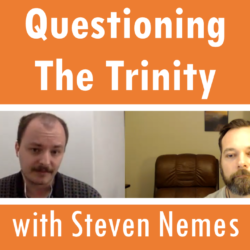 Why are there so many divergent beliefs about what the bible teaches? Partially, this results from mistakes we make when reading scripture. In this interview, Dr. Jerry Wierwille enumerates seven typical fallacies that bible students commit when reading:
Why are there so many divergent beliefs about what the bible teaches? Partially, this results from mistakes we make when reading scripture. In this interview, Dr. Jerry Wierwille enumerates seven typical fallacies that bible students commit when reading:
- Root Fallacy
- Time-Frame Fallacy
- Misusing Parallels Fallacy
- Single Meaning Fallacy
- Word-Concept Fallacy
- Disjunctive Fallacy
- Lexical Fallacy
Avoiding these pitfalls will help you engage with scripture better and build solid understandings that can stand up to critical analysis.
Notes and Links:
- Dig deeper by reading Introduction to Exegetical Fallacies and Overview of Exegetical Fallacies
- Listen to Wierwille’s earlier interviews, especially the one he did on Hermeneutics (interpreting scripture)
- Check out these sermons and articles on Wierwille’s website (JerryWierwille.com)
- To delve deeper, take a look at D. A. Carson’s Exegetical Fallacies
- Intro music: “District Four” by Kevin MacLeod. Licensed under Creative Commons: By Attribution 3.0 License.







This is my favorite Restitutio episode to date. Jerry shares exceptional information that will prove lucrative for the lay exegete and professional theologian alike. This episode met the basic requirements to be shared into a special group that I’m in, which mainly focuses on Biblical languages and how to correctly interpret them. The group is loaded with professors and bible students of all categories. The episode was liked by many in the group so perhaps some new listeners will show up.
This is well done and Jerry’s articles on the topic which you list above are even better. I read Carson’s book Exegetical Fallacies about twenty years ago and, though I believe him to be an excellent scholar and agree with most of his points, I found him at times to be a bit too ornery as well as too dismissive of other first class Bible scholars. In addition, as Jerry states on this program the book is quite technical. So, I would highly recommend Jerry’s articles instead. They cover most of the same territory in a more pleasing and straightforward manner and are obviously aimed at simply helping the body of Christ to grow in understanding, apart from personal rivalries of the scholarly world. I would also agree with Sean’s encouragement that one of the keys to keeping this fairly simple and guarding ourselves against fallacies is to read large portions of scripture – especially in more modern versions such as ESV, NIV, CSB, etc. – and to thus become familiar with the subject matter on a broad scale based on the translations of modern translators. Of course, this takes time, but ultimately, most of the details of individual passages, etc. will then properly fit within the whole. Finally, though a bit technical itself, I would also highly recommend the book How To Read the Bible for All its Worth by Fee and Stuart, 4th edition. This is a comprehensive “How to Study the Bible” guide and is good for both personal study as well as for a Bible study group to work through together. Of course, there are other similar works that are also good. Thanks so much!